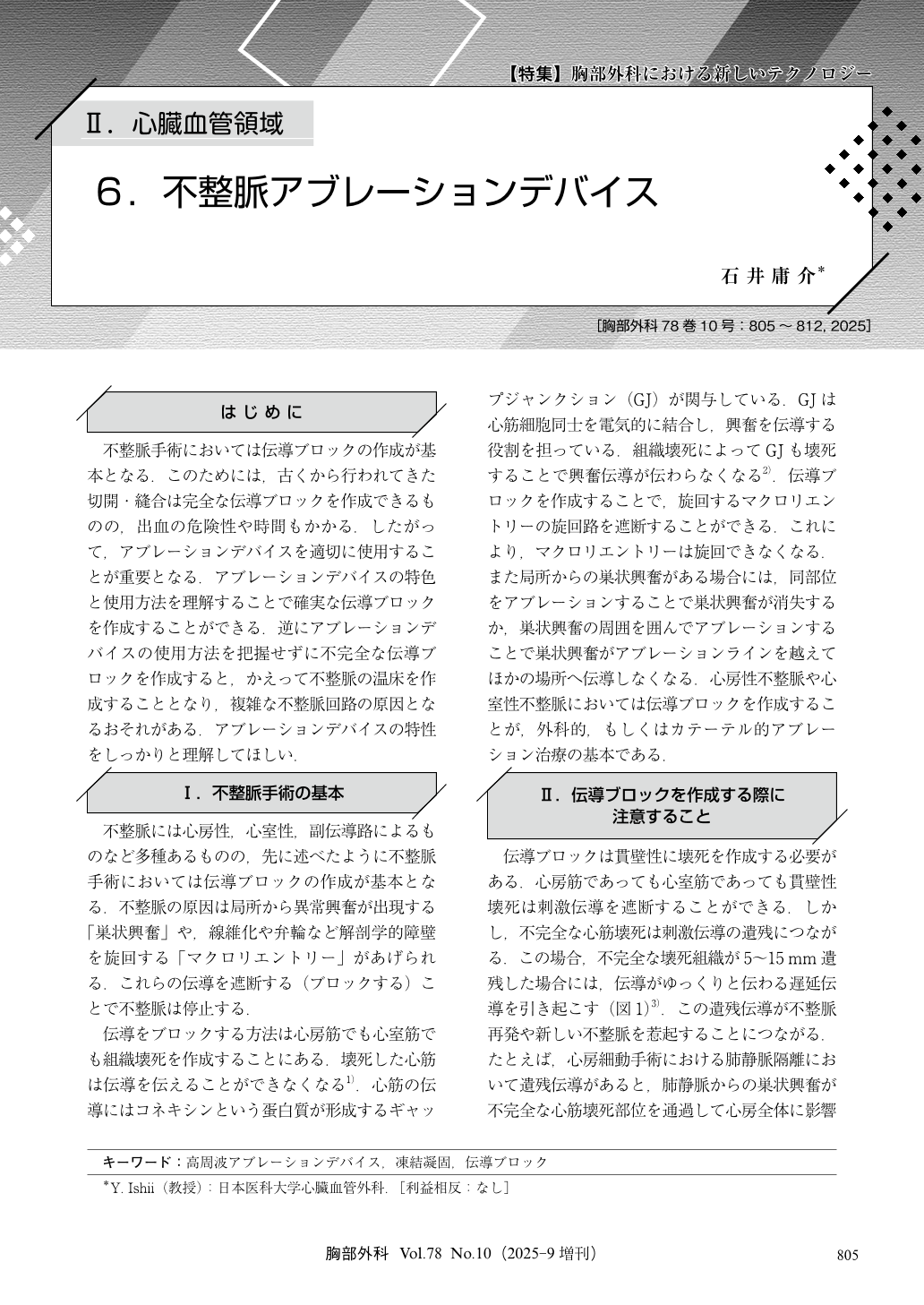Japanese
English
- 有料閲覧
- Abstract 文献概要
- 1ページ目 Look Inside
- 参考文献 Reference
不整脈手術においては伝導ブロックの作成が基本となる.このためには,古くから行われてきた切開・縫合は完全な伝導ブロックを作成できるものの,出血の危険性や時間もかかる.したがって,アブレーションデバイスを適切に使用することが重要となる.アブレーションデバイスの特色と使用方法を理解することで確実な伝導ブロックを作成することができる.逆にアブレーションデバイスの使用方法を把握せずに不完全な伝導ブロックを作成すると,かえって不整脈の温床を作成することとなり,複雑な不整脈回路の原因となるおそれがある.アブレーションデバイスの特性をしっかりと理解してほしい.
In arrhythmia surgery, creating a reliable conduction block is fundamental. Traditional cut-and-sew techniques, while effective, pose risks such as bleeding and prolonged operative time. Modern surgical ablation devices―such as cryoablation, radiofrequency, microwave, and ultrasound―enable targeted, transmural myocardial necrosis with greater safety and efficiency. However, improper use or incomplete ablation may lead to residual conduction, resulting in arrhythmia recurrence or new arrhythmogenic circuits. Each device has distinct energy sources, thermal profiles, and tissue interactions. Cryoablation, for example, remains reliable with minimal collateral damage, while bipolar radiofrequency allows precise, real-time monitoring of lesion transmurality. Ultrasound and microwave technologies offer deeper tissue penetration but have varying long-term efficacy. Thorough understanding of device characteristics, lesion depth, and intraoperative confirmation of conduction block is essential. As minimally invasive techniques advance, the role of appropriately selected and applied ablation devices becomes increasingly vital for safe and effective arrhythmia surgery.

© Nankodo Co., Ltd., 2025


